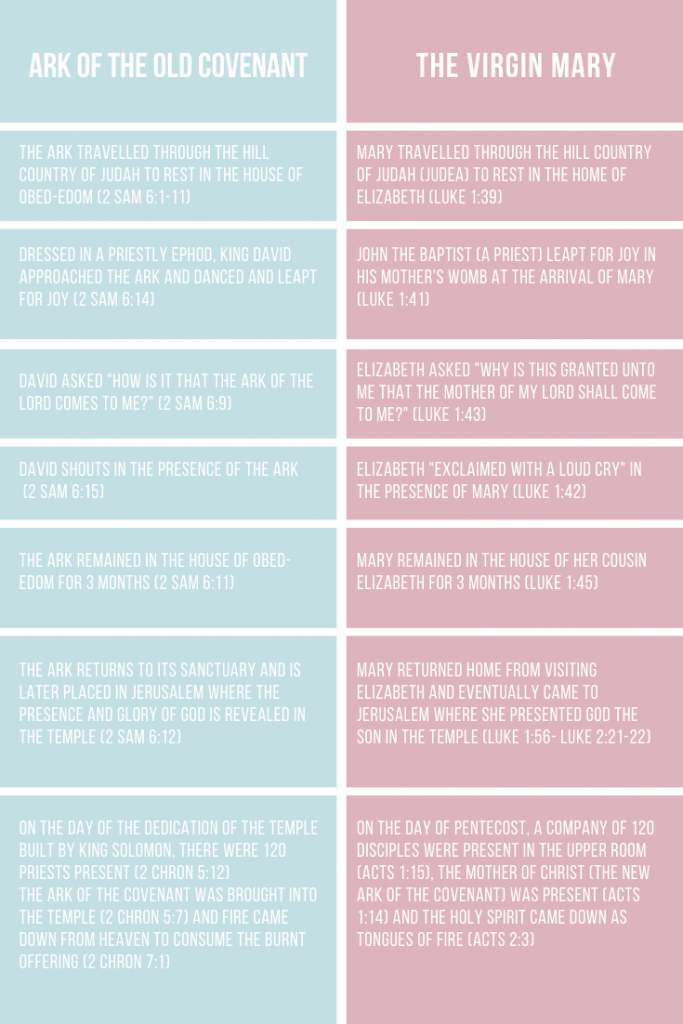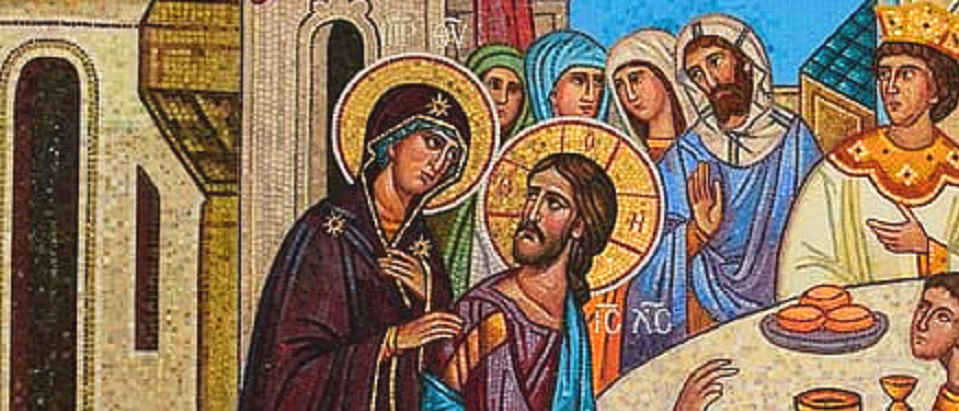Jesus said to her, “Woman, what concern is that to you and to me? My hour has not yet come.” — John 2:4
If you’ve read this passage before, you’ve probably perceived Jesus as cold or disrespectful. Yet, when you study scripture through the lens of typology, you realise that actually, Jesus was honouring His mother, Mary.
Biblical Typology, according to St Augustine, is the idea that the New Testament is hidden in the Old and the Old Testament is made manifest in the New. Rather than separating the Old from the New, it draws together biblical parallels. When Jesus refers to His mother as “woman”, He was referencing the Book of Genesis, demonstrating three main aspects of her character.
“At last!” the man exclaimed. “This one is bone from my bone, and flesh from my flesh! She will be called ‘woman,’ because she was taken from ‘man.'” — Genesis 2:23
The New Eve:
For just as through the disobedience of one person the many were made sinners, so through the obedience of one the many will be made righteous. — Romans 5:19
From the very beginning of human existence, Jesus was going to be part of the story as the antidote to sin. If Jesus is the New Adam, then it makes sense for Mary to be the New Eve.
Note: that the concept of Mary as the New Eve is not something that I’ve simply made up, but rather is based on historical early Church documents, written by Justin Martyr, Irenaeus and Tertullian that date back to the 2nd Century, similarly depicting Mary as the New Eve.
In the Garden of Eden, sin entered the world through a specific process and it is through the same process, that God planned to redeem the world. In the Old Testament: the fallen angel, in the form of a serpent deceives the woman without original sin and causes her to disbelieve and disobey. When the woman says no to God, she takes that disobedience and hands it over to the man, who also takes a bite of the fruit, who then hands the disobedience over to the rest of the world. This resulted in original sin and death.
Similarly, in the New Testament: an angel appears to Mary and causes her to believe and obey. When Mary, the woman, says yes to God, she takes that obedience and hands it over to her Son, who takes it and hands it to the rest of the world, resulting in redemption and life through Jesus.
In the same way that sin entered through one fallen angel, to one woman, to one man and lastly, to the rest of the world; redemption entered the world through one angel, to one woman, to one man and lastly, to the rest of the world. The pride rooted in the decisions made by Adam and Eve is reversed by the humility of Jesus and Mary.
Mary said, “Behold, I am the handmaid of the Lord. May it be done to me according to your word.” Then the angel departed from her. — Luke 1:38
Rather than rebuking her, Jesus is honouring His mother for saying yes to God and surrendering to the Father’s Will as through her, the New Eve, God was able to carry out His redemption plan to completion.
The New Ark Of The Covenant:
Notice how in the Book of Genesis, the woman is only named Eve after she sinned. Before, the man and the woman were two humans created free from the stain of original sin. So, when Jesus refers to His mother as “woman” He was implying that she too was free from sin and pure. In the same way that God created the first two humans without original sin, it is possible that God would do the same with Mary.
It would be fitting that Mary would be the fulfilment of the Ark of the Covenant (God’s dwelling place) as Jesus would dwell in her for 9 months. In the Book of Exodus, God commanded Moses to build the Ark of the Covenant with the purest materials. The Ark was so pure that in 1 Samuel 6 and 2 Samuel 6, God struck down those who simply touched or looked into the Ark. As a result, it makes sense that God would preserve Mary from original sin in order to specially prepare her to be the new Ark of the Covenant.
In it stood the golden altar of incense and the ark of the covenant overlaid on all sides with gold, in which there were a golden urn holding the manna, and Aaron’s rod that budded, and the tablets of the covenant. — Hebrews 9:4
The Ark of the Covenant consisted of three aspects of Jesus waiting to be revealed and made manifest. The manna prefigured Jesus as the Bread of Life (John 6:35), the rod of Aaron the High-Priest prefigured that Jesus would be our new High-Priest (Hebrews 4:14) and the Tablets of the Covenant prefigured the Word of God that would become flesh (John 1:14). Thus, it makes sense that when God became Man, He would dwell in a new Ark – Mary’s womb.

The Biblical Parallels between the Original Ark of the Covenant and Mary as the New Ark are so blatantly obvious. In the same way that the Ark of the Covenant was preserved from impurity, it seems fitting that the New Ark would also be preserved from original sin so not to defile the dwelling place of the Lord. Therefore, by referring to Mary as “woman” Jesus was highlighting her purity.
Our Spiritual Mother:
The man named his wife Eve, because she was the mother of all living. — Genesis 3:20
If Mary is the New Eve, then it makes sense that she would also be our new spiritual mother, further emphasised clearly in Revelations 12. In this passage, the vision depicts a woman giving birth to a son, of whom we know to be Jesus. The vision continues with a dragon waging war on the Son of God and being defeated. Since the dragon represents the devil and the child represents Jesus, then the only other option would be for the woman to represent Mary.
Then the dragon was angry with the woman, and went off to make war on the rest of her children, those who keep the commandments of God and hold the testimony of Jesus. — Revelation 12:17
In other words, all Christians are children of their spiritual mother Mary. This is emphasised further in the Gospel of John.
When Jesus saw his mother and the disciple there whom he loved, he said to his mother, “Woman, behold, your son.” Then he said to the disciple, “Behold, your mother.” And from that hour the disciple took her into his home. — John 19:26-27
Many scholars and theologians have suggested that when John refers to himself as the “disciple Jesus loved” he represents the whole of humanity. Therefore, throughout his Gospel, there’s this reoccurring motif of us also as “disciples Jesus loved” putting ourselves in his position.
At the foot of the Cross, when Jesus refers to His mother as “woman”, Jesus offers her to us as a spiritual mother. The love of Jesus for us was so intense that He gives Mary to us as a gift. When Jesus referred to Mary as “woman”, He wasn’t being rude or disrespectful, but rather He was honouring her and praising her for being the New Eve: obedient in every way to God’s plan.
Ultimately, Mary’s purpose is to point to her Son. You see, Jesus is like the sun, the source of light and Mary is simply the moon – she simply reflects the light that comes from the sun. She doesn’t have any light of her own, in the same way that we don’t have any light of our own. Everything good about Mary was from the grace of God working through her life. Everything beautiful about her life points to the beauty of our God.
“Never be afraid of loving the Blessed Virgin too much. You can never love her more than Jesus did.” – St Maximilian Kolbe

